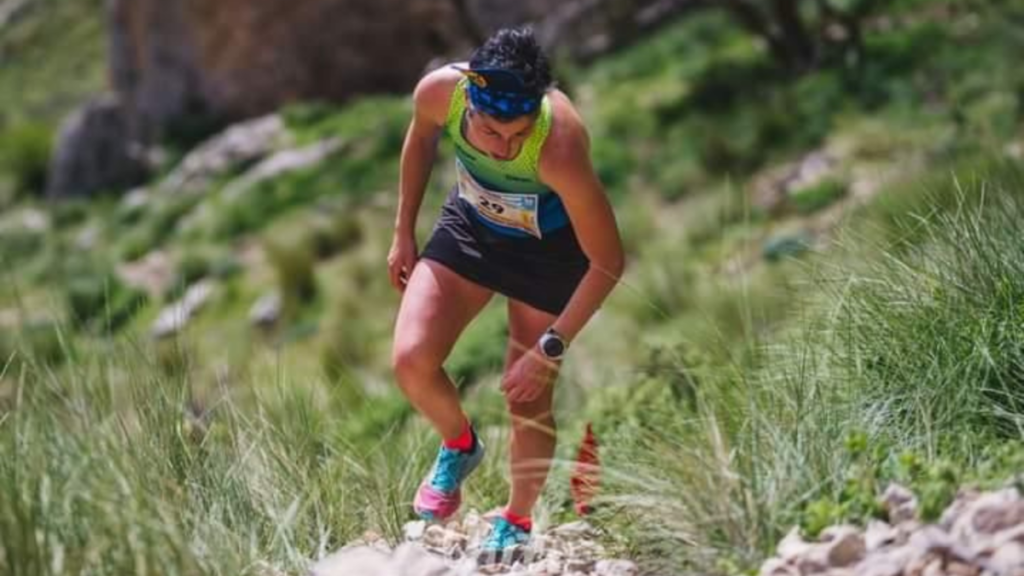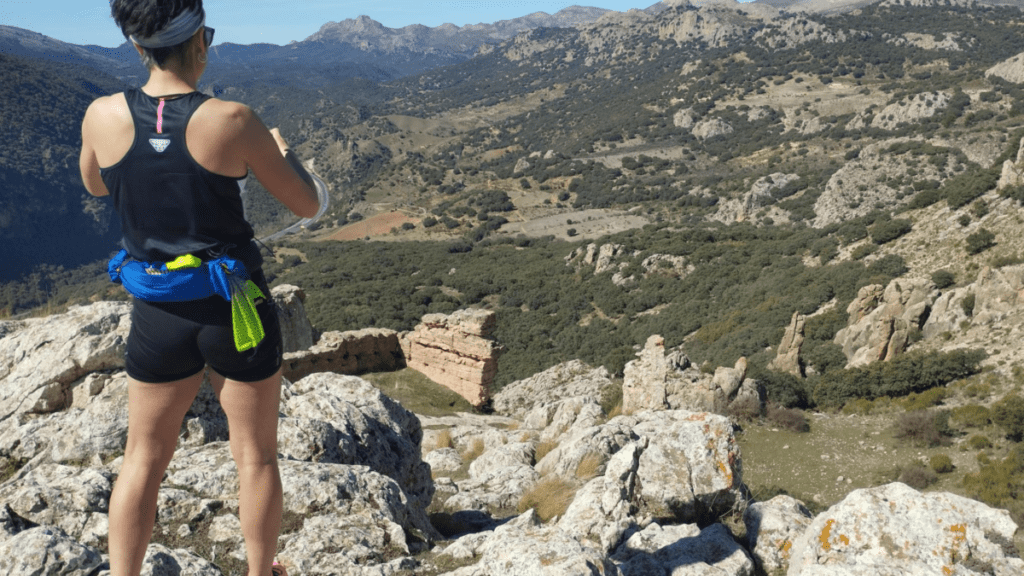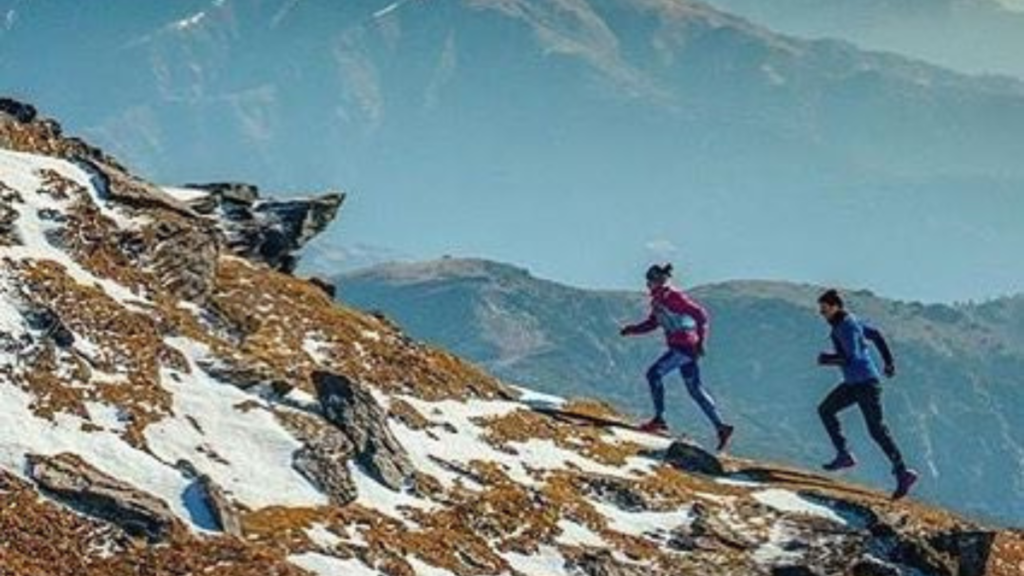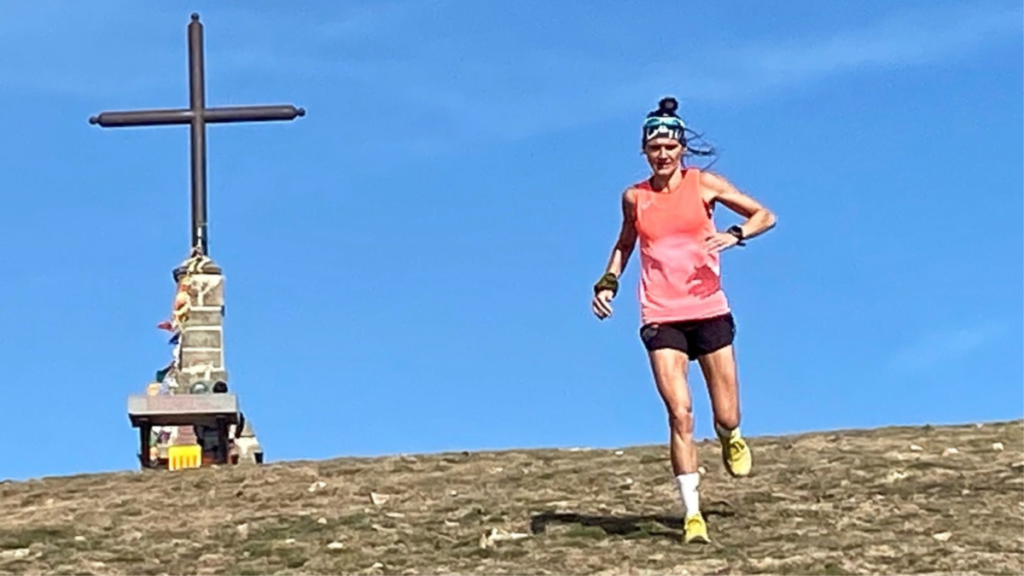
We all know that trail running involves running both up and down hills of varying lengths and gradients. If we want to get better at trail running we need to incorporate hill workouts into our training. At the same time, just doing the same hill workout every time you head out onto the trails will soon become boring. So, join me in looking for ways to add variety to our hill workouts.
Hill workouts are vital for trail runners who want to improve at trail running. In the same way that the hills you encounter out on the trails are not all equal, there are different hill workouts that help you cope better with all the different kinds of hills in your next trail event.
Let’s take a closer look at these 13 different kinds of hill workouts and see which ones you need to do so that you can eliminate the weaknesses in your trail running.
Sprint Up and Jog Down: The Classic Hill Workout for Trail Runners
This is the classic hill workout and it’s the first thing anyone thinks of when they see the words hill work out on a training plan. The idea is simple, you run up the hill as fast as you can manage and then jog slowly back down. Use the jog back down the hill as your recovery before starting the next sprint.
When I do this workout I normally do 4 sets of 4 sprints. Each sprint in the set starts the moment I get to the bottom of the hill with no additional resting. I only allow myself to rest between each of the 4 sets and I limit the rest to 3 minutes.
Power Hiking: A Killer Hill Workout for Trail Runners
The reason why I incorporate power hiking into my hill workouts is that I use power hiking in my trail running races and I want to train what I will be doing on race day. The reason is simple. On steep trails up long hills, it is usually easier and quicker to power hike up a long hill with almost no loss of speed but keep my heart rate relatively low. Hitting the top of the hill with a lower heart rate means being able to run over the top and down the other side much faster than if I had staggered over the top of the hill with my heart rate way up above the lactate threshold.

Like many other aspects of trail running, power hiking is a skill that must be honed so that you will be able to use power hiking in your next race at the maximum pace that you can manage without spiking your heart rate. I also use my power hiking workouts to practice using my hiking poles, including taking them out of my pack and putting them away while on the move.
Stairway to Fitness: Incorporating Stairs in Your Hill Workout
Many trails on steep terrain have stairs built into them as a way to prevent soil erosion on the trails. Therefore if you are likely to encounter stairs on the trail then it is a good idea to incorporate stair climbing into your hill workouts.
My stair climbing workouts are a variation of the sprint up and jog down workout that I explained earlier. I run up the stairs as fast as I can and use a slower jog down the stairs as my means of recovery before sprinting up the next flight of stairs. From personal experience, I would say that it is always a good idea to jog more slowly down the stairs especially if your stairs are narrow as it is very easy to misjudge your timing on the stairs as you’re running down them and land up having a nasty fall.
Hill Repeats: The Ultimate Hill Workout for Trail Running Strength
You can be forgiven for thinking that doing hill repeats is exactly the same workout as the hill sprints that I mentioned earlier. That is because many people do them in exactly the same way. However, I include cresting the hill in my heel repeat workout. This is the same variation of the workout that the Kenyans use with great success.
Instead of just sprinting up the hill for a fixed distance or time, I will run up the hill as hard as I can and carry that effort over the top of the hill and about 50 yards down the other side. It is a workout that my High School cross-country coach taught me. As a result, the top of any hill in a trail running race is a spot where I always pass other runners.
Runners that just train hill sprints with a jog back down the hill will nearly always slow down as they get to the top of a hill and then jog over the crest and down the other side. By training myself to carry my effort over the crest of the hill, I’m able to overtake multiple runners and also open up a gap on any runners that are behind me.
The Pyramid: An Intense Hill Workout for Trail Running Endurance
The pyramid hill workout is an intense variation of the sprint up and jog down variation of the hill workout and builds both endurance and power. I use increments of 30 seconds for my pyramid hill workouts when I do 4 sprints in a set.
The way that it works is as follows, for my first sprint I go for 30 seconds, for my second sprint it will be 60 Seconds, the third sprint it will be 90 seconds, and for the final sprint of the set will be a full 2 minutes of sprinting up the Hill.
The Ladder: A Creative Hill Workout for Trail Runners
The ladder hill workout is a variation of the pyramid set but is way more intensely taxing and absolutely wrecks my legs whenever I do it.
For the ladder hill workout, I do the same series of hill sprints that I would have done in a pyramid set, however, I then repeat that pyramid set in reverse order before being able to take my first rest between sets.
For example, in my pyramid workout, my 4 sprints were 30 seconds 60 seconds 90 seconds, and 2 minutes for the four efforts in each set. By comparison, each set of a ladder a workout will be seven different efforts. The seven different efforts will be as follows: 30 seconds, 60 Seconds, 90 seconds, 2 minutes, 90 seconds, 60 Seconds, and 30 seconds.
Try this on your next hill workout and see for yourself how effective it is.
The Tempo Run: A Fast-Paced Hill Workout for Trail Runners
If I’m out running on a trail that has undulating hills, it is the perfect opportunity to be able to use a tempo run as a type of hill workout. For the tempo run in normal circumstances when training for a marathon on the road, we would take a specific pace that is usually slightly higher than our marathon pace and maintain that for a specific length of time. That tempo interval can be anything between 10 minutes and 30 minutes depending on the event you are training for.
Obviously, when doing a tempo run on the trails, doing a fixed pace up and down all the hills is not the ideal option simply because steep hills on a trail slow us down a whole lot and tend to spike our heart rate. Therefore, when I do my tempo runs out on the trails it will almost always be at a pre-designated heart rate.

Because I run my tempo run on an undulating trail maintaining a specific heart rate, I need to increase my speed downhill and keep my speed in check while going uphill so as not just spike my heart rate too high.
The Fartlek: A Fun and Flexible Hill Workout for Trail Running
This is indeed one of the most fun types of hill training workouts that I do when working on my trail running fitness. As you probably know from most types of running workouts a fartlek workout is one which gives you a flexible type of interval workout where each interval is of varying distances and varying times. These variations keep things interesting and teach you how to accelerate and hold different speeds for different amounts of time.
The way I do this in terms of a hill workout while trail running is I pick random features along the trail to target for each interval. For instance, it might be a flowering bush, it might be a tree, or it might be a specific rock outcrop. Whatever the trailside feature might be, I pick the object and I run as quickly as possible to that object as I possibly can. Once I pass that specific point I slow my pace back down so that I can bring my heart rate back to a reasonable level before picking a new point along the trail and sprinting to that.
The area where I do the vast majority of my running has trail markings painted in either green and white paint or red and white paint. So, what I will often do is as soon as I see a trail marking up the trail I will sprint to that, and then once I pass the trail marking I will slow down to recover from the effort until I spot the next trail marking. Because trail markings are randomly distributed it gives me a random structure to my interval workout. I usually have no idea when the next trail marking will be appearing along the trail. I can come around a corner and suddenly see the next trail marking a couple of hundred yards further up the trail. So, I’m never completely sure when my next interval will be happening or indeed how much rest I will have between the one interval and the next.
The Long Hill: Building Endurance for Trail Running
When I want to build endurance for trail running while adding strength at the same time, I will look for long Hills that have a relatively shallow gradient. Running up a long hill with a shallow gradient means that I can keep running for longer without needing to take a walk break rather than pushing too hard on a steep hill and spiking my heart rate too high.
Living in the mountains, there are not that many opportunities to run a long hill that still has a relatively shallow gradient but I do have a few options at my disposal. As my fitness level improves throughout the season I can start running longer hills as my endurance training workout. However, I can also increase the variety of hills that I run on by gradually choosing steeper hills as the season and my fitness progresses.
Running long hills is something that I wouldn’t necessarily suggest that you do right at the beginning of your training plan while you are still relatively unfit. You need to have built up a reasonable degree of cardiovascular fitness to get the maximum benefit out of running up a really long hill that has a relatively shallow gradient of approximately 3 to 4%.
The Rolling Hills: A Challenging Hill Workout for Trail Runners
The mountain area where I live has relatively few hills that stay a constant gradient all the way up. Most of them are relatively undulating in nature where each successive uphill is slightly longer than the downhill that preceded it. So in other words, over the course of a successive series of undulating hills, my altitude gets higher and higher with each successive crest.
The undulating and successively higher hills that I go over make for a really challenging workout. Most of the time when I do these types of workouts it will be an out-and-back type of run whereby the first half of my run will be longer uphills and relatively shorter downhills in terms of distance. But when I come back down the hill my downhill will be broken up by successive uphill sections. Because I’m running substantially slower when going uphill the amount, I still spend more time running uphill on the return half of my training run.
You owe it to yourself to include rolling hills within your hill training workouts as they help keep the training interesting and the successive uphills and downhills create a type of interval workout in theory without needing to keep looking at your watch to see when the next interval will start.
An interval workout using an undulating trail means that you can completely ignore your watch beyond saving the data once you have completed your training. That is because the terrain that you’re running over will dictate when you’re putting in an effort and when you’ll be recovering.
The Walk-Jog: A Gentle Hill Workout for Trail Running Beginners
In a way, you can almost call this workout an extension of the power hiking up hills workout that we discussed just a little earlier. Many runners who are just getting into trail running are still relatively unfit and find the idea of running all the way up a hill a very daunting proposition. The way to still get the most out of a hill workout while building your trail fitness is to incorporate walk breaks along the way.
If you feel that going up the hill is getting to be too much of an exertion, slow down to a walk but try and limit the amount of time that you’re walking as much as possible. When I do this I find that by keeping my walk breaks to approximately 1 minute each time, I’m able to go further between each walk break as my fitness improves.
When I was training for the National Championship of Xterra offroad triathlon, I found that by doing my hilly runs with one-minute walk breaks I was able to improve my running fitness drastically within a relatively short space of time. I could incorporate these types of workouts in between my mountain biking and my swimming and get the most benefit out of my runs for a relatively short period of time spent on the trails.
Downhill Training: Preparing for Trail Running Descents
When you’re competing in a trail running event, it doesn’t only involve going uphill. As the cliche goes: everything that goes up must eventually come down. This applies as much to trail running as it does to so many other things in life.
Because trail running events are going to be incorporating sections or downhill, it is important to practice running downhill because it is a vital skill if you want to cover ground quickly during the course of your trail running race.

Before you start incorporating downhill running into your trail running training plan, I strongly suggest that you read the article that I wrote all about running downhill without falling on your face here on Trail Run Planet.
The Sand Dune Shuffle: A Unique Hill Workout for Trail Runners
Out of all of the potential hill running workouts for children that I have done over the course of my running career, there is one that I can remember from my cross-country competition days as something that I absolutely detested. I’ll be the first to admit that this type of workout is incredibly effective at building strength and power as a runner in a relatively short space of time but I remember it as a horrible workout to do while you’re actually doing it.
The workout that I’m referring to is called the sand dune shuffle. As the name implies it involves long and often very steep sand dunes that you attempt to run all the way up. It feels as if you slide back one step for every two steps you take thanks to the loose sand. That same loose sand means a workout that absolutely burns your quads.
I can remember more than once during one of our sand dune shuffle workouts the thought crossed my mind of quitting running altogether because I just hated that specific workout so much. However, what am I saying is that the workout was incredibly effective, especially in the weeks preceding a cross-country race that involved a lot of loose sand. That is because both myself and my teammates were able to run far more quickly over the loose sand as we had gotten better at running with down-pointed toes to be able to maximize the grip in the loose sand and thereby dominate those races. Winning the races was a great feeling but the specific training to be able to do those races was no fun at all.
With that being said, if you do have a race coming up that involves a whole lot of loose sand I strongly suggest giving this workout a try even though it is one that I particularly loathe.
